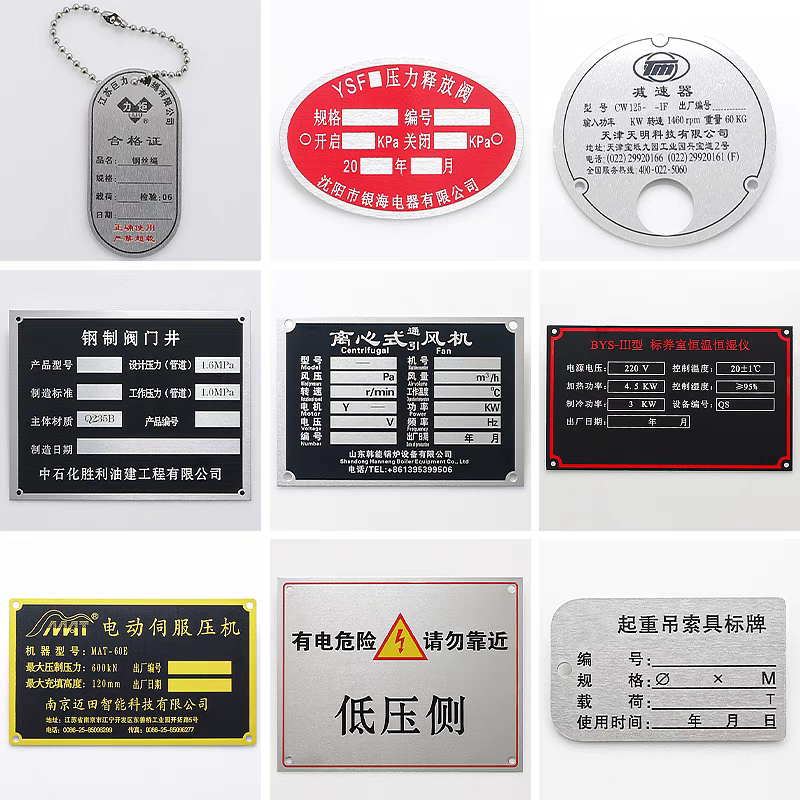Fire extinguishers stand as silent sentinels, ready to combat flames at a moment's notice. Yet, their reliability hinges entirely on one small, often overlooked detail: the fire extinguisher service tag. This unassuming piece of documentation isn't just a sticker; it's a critical passport proving the extinguisher's operational readiness and compliance. Understanding the information embedded in these tags is non-negotiable for facility managers, safety officers, and anyone responsible for fire safety. Here are 7 crucial aspects you need to know about fire extinguisher service tags:

1. What is a Fire Extinguisher Service Tag & Why is it Mandatory?
A fire extinguisher service tag is a durable, tamper-evident label affixed to an extinguisher after it has been inspected, maintained, or recharged by a qualified professional. Its primary purpose is to provide a verifiable, chronological record of the extinguisher's service history. Think of it as the extinguisher's "medical chart."
The mandatory nature of these tags stems from stringent safety regulations and the critical role extinguishers play in life safety:
Proving Operational Readiness: The tag is the only immediate visual proof that the extinguisher has been professionally checked and deemed fit for service. It confirms the pressure is correct, the nozzle is clear, the safety seals are intact, and the extinguishing agent hasn't deteriorated or settled.
Regulatory Compliance: National and international fire codes (primarily NFPA 10: Standard for Portable Fire Extinguishers) mandate regular inspection, maintenance, and annual servicing by certified personnel. A current fire extinguisher service tag is the primary evidence of compliance during fire marshal inspections, insurance audits, and OSHA visits. Failure to have properly documented service tags can result in hefty fines and citations.
Liability Protection: In the unfortunate event of a fire where an extinguisher fails, documented service records via the tags are crucial evidence demonstrating due diligence in maintaining safety equipment. This protects businesses and property owners from negligence claims.
Tracking Service History: The tag provides a clear history of all maintenance performed, allowing for tracking of the extinguisher's lifespan, identifying recurring issues, and planning for eventual replacement.
Ensuring Correct Service Intervals: Tags clearly indicate the date of the last service and the due date for the next one, preventing extinguishers from being overlooked and falling out of compliance.
2. Navigating the Compliance Landscape: Regulations Governing Service Tags
The requirements for fire extinguisher service tags are not arbitrary; they are strictly defined by authoritative standards, primarily:
NFPA 10 (Standard for Portable Fire Extinguishers): This is the cornerstone standard in the US and widely adopted internationally. NFPA 10 dictates:
Frequency: Monthly visual inspections by the owner/occupant, annual maintenance inspections by a certified technician, hydrostatic testing at specific intervals (typically 5 or 12 years depending on type), and 6-year maintenance for certain dry chemical types.
Tag Requirements: Mandates that a "tag or label" be attached after inspection or servicing, indicating the month and year the service was performed and identifying the person or company performing the service. It must be durable and resistant to environmental conditions.
Record Keeping: Requires maintenance records to be kept, with the service tag serving as the on-device record.
OSHA (Occupational Safety and Health Administration): OSHA regulations (e.g., 29 CFR 1910.157) reference NFPA 10 or have similar requirements, mandating that portable fire extinguishers be "visually inspected monthly," "maintained in a fully charged and operable condition," and "subjected to an annual maintenance check." The fire extinguisher service tag is the primary evidence of this annual maintenance.
Local Authority Having Jurisdiction (AHJ): Fire Marshals and local building/fire codes enforce NFPA 10 and may have additional specific requirements regarding tag information or format. Compliance with the AHJ is paramount.
Insurance Company Requirements: Insurance providers often require proof of compliance with fire codes, including documented fire extinguisher maintenance, as a condition of coverage. The service tag is key evidence.
A compliant fire extinguisher service tag is not just a sticker; it's a standardized record fulfilling specific regulatory mandates.
3. Anatomy of a Service Tag: Decoding the Critical Information
A properly filled-out fire extinguisher service tag contains essential information that tells the story of the extinguisher's maintenance. Key elements include:
Service Date: The month and year (often MM/YY or a specific date) when the service was performed. This is the most critical piece of information.
Service Due Date/Next Service Date: Clearly indicates when the next annual maintenance (or 6-year maintenance) is required. Some tags use a "punch-out" month/year system for easy visibility.
Service Company Identification: The name, address, and often phone number of the licensed fire protection company that performed the service.
Technician Identification: The name or unique identifier of the certified technician who performed the work. This provides accountability.
Type of Service Performed: Checkboxes or descriptions indicating what was done:
Annual Maintenance Inspection
6-Year Maintenance (for Dry Chemical, Dry Powder, Cartridge-Operated)
Hydrostatic Test & Date (e.g., "Hydro 01/25" meaning tested Jan 2025, good for 5 or 12 years)
Recharge (after use or during maintenance)
Internal Examination (part of 6-year or 12-year service)
New Extinguisher Installation
Extinguisher Type/Agent: Often includes the type (e.g., ABC, BC, K) or the agent (e.g., Dry Chem, CO2, Wet Chem) for quick reference.
Extinguisher Serial Number or ID: Links the specific tag to the specific extinguisher, crucial for detailed record-keeping.
Tamper-Evident Features: Perforations, unique seals, or specific materials that show if the tag has been removed or tampered with, ensuring the record's integrity.
Compliance Statements: May include text like "Serviced per NFPA 10" or reference the specific standard complied with.
Barcode/QR Code: Increasingly common for linking to digital service records stored by the servicing company.
The fire extinguisher service tag must be filled out legibly, accurately, and completely to serve its purpose.

4. The Service Journey: What Happens During Tagged Maintenance?
Attaching a fire extinguisher service tag signifies that a certified technician has performed specific, thorough procedures. Understanding what happens during these service visits is key:
Annual Maintenance Inspection (Tagged Annually):
Visual Examination: Check for obvious physical damage, corrosion, leakage, or clogged nozzle.
Pressure Check: Verify the pressure gauge is in the operable (green) zone. For cartridge-operated, ensure the cartridge is present and sealed.
Weight Check: Weigh the extinguisher and compare to the weight stamped on the cylinder to ensure full charge (especially critical for CO2).
Safety Seals & Tamper Indicators: Ensure the pull-pin seal and tamper indicator are intact.
Hose & Nozzle Inspection: Check for cracks, blockages, or damage.
Operating Instructions: Verify they are legible and facing outward.
Mounting & Accessibility: Confirm the extinguisher is properly mounted, unobstructed, and its class is appropriate for the nearby hazards.
Verification & Tagging: If all checks pass, the technician completes and attaches the new fire extinguisher service tag.
6-Year Maintenance (Required for Dry Chemical, Dry Powder, Cartridge-Operated - Tagged): This is significantly more involved than the annual inspection:
Discharge & Empty: The extinguisher is completely discharged.
Internal Examination: The valve is removed, and the interior of the cylinder is inspected for corrosion, coating deterioration, or damage.
Agent Examination: The dry chemical agent is emptied, checked for moisture contamination, lumps, or deterioration. It may be sieved or replaced entirely.
Valve Overhaul: The valve assembly is completely disassembled, cleaned, inspected, worn parts replaced (like O-rings), lubricated, and reassembled.
Hose/Nozzle Replacement: Often replaced as part of this service due to age and potential degradation.
Recharge: Refilled with new or verified agent to the correct weight/pressure.
Reassembly & Testing: Reassembled, pressure tested (if applicable), and function tested.
New Tag: A new fire extinguisher service tag is attached, indicating the 6-year maintenance was performed.
Hydrostatic Testing (Tagged with Test Date): Conducted at 5 or 12-year intervals (depending on extinguisher type and construction) by specially certified facilities. The cylinder is filled with water, pressurized to a specific multiple of its working pressure, and held to check for leaks, expansion, or permanent deformation. If it passes, it's dried, recharged, and tagged with the test date.
Each fire extinguisher service tag represents a specific level of service and verification performed by a professional.
5. The High Cost of Neglect: Risks of Missing or Invalid Service Tags
A missing, outdated, or obviously tampered-with fire extinguisher service tag is a glaring red flag with serious consequences:
Regulatory Violations & Fines: During fire inspections by the AHJ (Fire Marshal), missing or expired tags are one of the most common and easily identifiable violations. This results in citations and potentially significant fines until corrected. OSHA inspections can yield similar penalties.
Voided Insurance Coverage: Insurance policies often require compliance with fire codes. Failure to maintain extinguishers with current service tags can be grounds for denying a claim if a fire occurs and the extinguishers are found non-compliant. Insurers may even cancel policies.
Increased Liability Exposure: In the event of a fire where an extinguisher fails to operate and injuries or property damage result, the absence of a valid fire extinguisher service tag is powerful evidence of negligence. This dramatically increases the risk of successful lawsuits and substantial financial liability for the property owner or business.
Compromised Safety: An extinguisher without a current service tag is an unknown quantity. It might be empty, clogged, corroded internally, or have degraded agent. Relying on it in an emergency could be catastrophic, leading to uncontrolled fire spread, injury, or death. The tag is the primary assurance it will function when needed.
Operational Disruption: Fire code violations, especially repeat offenses, can lead to operational shutdowns (e.g., closing a restaurant, halting construction) until compliance is achieved and verified. This causes costly downtime.
Damage to Reputation: Being cited for fire safety violations, particularly something as fundamental as extinguisher maintenance, damages an organization's reputation for safety and responsibility.
The fire extinguisher service tag is a small investment that safeguards against these substantial risks.
6. Choosing a Service Provider: Ensuring Valid & Compliant Tags
Not all service tags are created equal. The validity and compliance of the fire extinguisher service tag depend entirely on the company and technician performing the work:
Certification is Key: Technicians must be certified by a recognized organization. In the US, look for certification from:
National Association of Fire Equipment Distributors (NAFED)
Fire Equipment Manufacturers' Association (FEMA)
State-specific licensing where required (verify their license is current).
Reputation & Experience: Choose an established company with a strong reputation for quality service and compliance. Ask for references.
Scope of Service: Ensure they perform all required levels of service (monthly, annual, 6-year, hydro) and don't cut corners. Ask about their procedures.
Tag Quality & Detail: Inspect the tags they use. They should be durable, weather-resistant, tamper-evident, and include all required information clearly (service date, due date, company info, tech ID, service type).
Detailed Service Reports: Beyond the tag, the provider should supply detailed service reports for your records, listing each extinguisher serviced, its location, serial number, and specifics of the work done.
Digital Record Keeping: Increasingly important. Providers offering online portals where you can access service histories and upcoming due dates add significant value and ease compliance tracking.
Transparent Pricing: Understand their pricing structure for different service levels (annual vs. 6-year) and recharges.
A valid fire extinguisher service tag only comes from a qualified, certified provider performing the work to NFPA 10 standards.
7. Beyond the Tag: Your Role in Fire Extinguisher Safety
While the fire extinguisher service tag proves professional maintenance, safety is a shared responsibility:
Monthly Visual Inspections (Owner/Occupant Duty): NFPA 10 requires a quick visual check by the building owner or occupant every month. This involves verifying:
The extinguisher is in its designated place.
It is unobstructed and visible.
The pressure gauge is in the green zone.
The pull-pin and tamper seal are intact.
There is no obvious physical damage or rust.
The fire extinguisher service tag is present and indicates a current annual inspection (within the last 12 months). Document these checks.
Report Issues Immediately: If any problem is found during the monthly check (low pressure, missing pin, damage, missing or expired tag), report it immediately to management or the responsible party for prompt service.
Know Your Extinguishers: Understand the types of extinguishers present, the fires they combat (A, B, C, D, K), and their locations. Ensure employees are trained on basic operation (PASS technique: Pull, Aim, Squeeze, Sweep).
Protect the Tag: Avoid painting over the tag, damaging it during cleaning, or allowing it to be obscured. Its visibility and legibility are crucial.
Plan for Replacement: Extinguishers have finite lifespans, typically 12-20 years depending on type and condition. Hydrostatic test failures or excessive corrosion found during maintenance will necessitate replacement. Track extinguisher age and budget accordingly.
The fire extinguisher service tag is a vital component, but active participation in monthly checks and reporting ensures a truly effective fire safety program.
The fire extinguisher service tag is far more than a bureaucratic requirement; it is the tangible proof of an extinguisher's readiness to save lives and property. It speaks volumes about an organization's commitment to safety and compliance. Understanding what the tag represents – the rigorous inspections, maintenance, and testing performed by certified professionals – is essential. Ensuring tags are present, current, legible, and from a reputable provider is a fundamental safety responsibility. Neglecting this small but critical element risks regulatory penalties, financial liability, insurance woes, and, most importantly, the failure of a vital safety device when seconds count. Invest in professional servicing, protect those tags, and maintain your monthly vigilance. That little tag holds the key to being truly prepared. Never let your guard down – or your tags expire.






